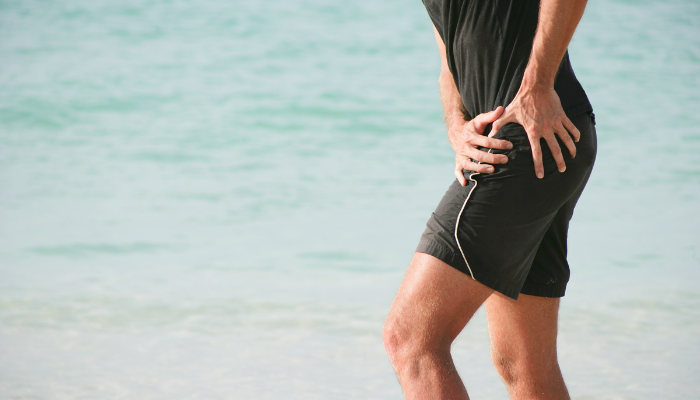
27 Jun Exploring the Major Trio of Detrimental Habits Impacting Your Hip Health—And Optimal Alternatives
In our fast-paced and technology-driven world, we often find ourselves unintentionally participating in habits that can take a toll on our hip health. The hips, being an instrumental joint in our body, play a major role in our balance, mobility, and overall well-being. However, certain behaviors and habits can compromise the health of our hips, potentially leading to pain, discomfort, and long-term issues. In this article, we’ll dive into the ‘Big 3’ bad habits that might be hurting your hips and provide you with practical and effective alternatives to help you maintain healthy hips for years to come.
1. Prolonged Sitting: The Sedentary Lifestyle
In the digital age, long periods of sitting have become an almost unavoidable part of daily life. Whether it’s binge-watching your favorite TV show, working at a desk or commuting to work, our hips often bear the brunt of prolonged sitting. This type of sedentary behavior can lead to tight hip flexors, weakened glute muscles, and a limited range of motion, all of which can contribute to hip pain and limited mobility over time.
What to Do Instead:
Combat the negative effects of prolonged sitting by incorporating regular movement breaks into your day. Stretch, stand up, and take short walks to alleviate hip tension and promote blood flow. Use hip-opening stretches such as pigeon pose, lunges, and butterfly stretch to maintain flexibility and counteract the stiffness that can happen from sitting. Engaging in a variety of regular exercise routines, particularly focusing on hip strength and mobility, such as yoga and Pilates, can go a long way in preventing and addressing hip discomfort.
2. Poor Posture: A Culprit for Hip Discomfort
Modern lifestyle habits, including sitting in unsupportive chairs and slouching over devices, have contributed to a widespread issue of poor posture. Poor posture can cause your back and hips to become misaligned, which can strain your hip joints. This can lead to hip pain, less ability to move your hips, and might even help cause problems like osteoarthritis over time.
What to Do Instead:
Prioritize practicing good posture daily. Keep your body aligned by imagining a string pulling you gently upward from the top of your head. Ensure that your ears, shoulders, and hips form a straight line when standing or sitting. Tighten your core muscles to help support your spine and pelvis, which keeps everything in the right position. Get furniture that’s good for your body and set up your workspace so you work and sit in the right way. Doing exercises like bridges and planks to strengthen your core will also make you more stable and keep your body aligned better.
3. Overtraining and Incorrect Form: The Dangers of Pushing Too Hard
Engaging in intense workouts with improper technique or failing to allow your body adequate time to recover can lead to injuries or hip strength. Overtraining, especially with bad form, places unwanted stress on the hip joints and the surrounding muscles, making them more susceptible to wear and tear.
What to Do Instead:
Use a measured and balanced approach to exercise. Begin your workouts with a thorough warm-up routine that includes dynamic stretches specifically designed to prepare your hip joints for movement. Place a strong emphasis on maintaining proper form during all exercises to avoid strain and minimize the risk of injury. Pay close attention to your body’s signals and ensure that you provide enough time for recovery between workouts. Incorporate low-impact activities like cycling, swimming, and brisk walking into your routine to give your hips a rest while still maintaining an active lifestyle.
Conclusion
Making these simple yet important adjustments to your daily routine can greatly impact the health and lasting strength of your hips. By recognizing and tackling the key ‘Big 3’ habits – sitting for too long, not standing or sitting properly, and pushing yourself too hard in exercise – you can take proactive measures to improve your hip health and avoid pain and injuries. Embrace movement, approach exercise thoughtfully, focusing on your posture and consider what your body needs. These changes will not only support your hips but also lead to a more lively, active, and pain-free life in the years ahead.


